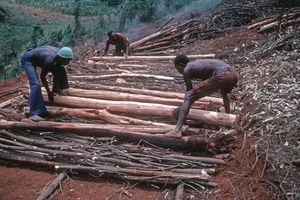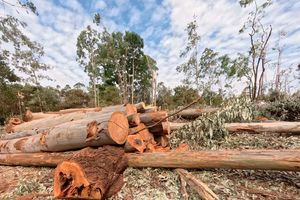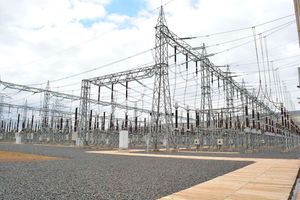
Mrs Ruto promised to visit all counties with forests to promote tree planting and forest conservation.
Last week, we reflected on the deep and often underestimated connection between our forests — both terrestrial and marine — our food security, and our collective livelihoods.
Today, we return with a renewed urgency. As citizens across the country engage in reviewing the Forest Conservation and Management Act, CAP 385, we are presented with an opportunity to shape not just policy, but Kenya’s forestry future.
The deadline for public input may be mid-April 2025, but the real deadline is ecological. Our forests are vanishing, and our time to act is now.
Regulatory reviews are valuable. But what Kenya truly needs is clarity of purpose — a bold, coherent, and inclusive vision for our forestry sector.
What is our true ambition? Are we striving to build a robust timber industry that fuels local production, creates jobs, and stimulates economic growth? Or are we focused on safeguarding our vital water towers to guarantee food and water security for generations to come? Perhaps we dare to dream of achieving both.
Clear and compelling leadership from the Kenya Forest Service (KFS) is essential — guiding policy development and implementation to align seamlessly with a unified vision.

The government’s moratorium on logging has paid off, the latest economic survey reveals.
First, we must start by acknowledging where we are. As I stated last week, Kenya is among the least forested nations in Africa.
At the same time, our demand for timber is skyrocketing — driven by urbanisation, infrastructure, and a growing economy. From construction to furniture-making, the pressure is immense. And yet, our domestic timber supply cannot meet the demand, leading to reliance on imports from beyond our borders, including Uganda.
Interestingly, Uganda offers a case study worth noting. In the late 1990s and early 2000s, they embraced commercial forestry — not just through large-scale plantations, but by empowering smallholder farmers.
This shift was mainly driven by the recognition of the need to restore degraded forests, meet the growing demand for timber, and create sustainable livelihoods.
Their forestry sector has grown nearly tenfold, with 80 per cent of commercial timber now produced by smallholders. This model has enabled Uganda to meet demand without sacrificing indigenous forests.
Key initiatives included the establishment of tree plantations and the introduction of public-private partnerships to encourage investment in commercial forestry.
Kenya must chart its own course, rooted in our unique ecological and socio-economic reality. Two-thirds of our land is arid, semi-arid, or desert. That means our forests and arable land are concentrated in just one-third of our territory.
We’re already paying the price of destruction. Each year, forest degradation costs Kenya at least three per cent of our Gross Domestic Product – more than Sh5 billion. But those numbers represent far more than lost revenue.
They signify vanishing ecosystems that regulate our climate, recharge our water sources, and anchor generations of livelihoods.
Kenya’s forest laws have come a long way. During the colonial era, the British administration used Forest Ordinances to exclude communities from forest management and facilitate commercial exploitation. The 1942 Ordinance, for instance, gave the minister unchecked power to declare public land as forest and alter boundaries at will. This inevitably undermined community rights and fuelled conflict.
In response to decades of mismanagement, the Forest Act of 2005 created the Kenya Forest Service (KFS) and introduced Community Forest Associations (CFAs) to facilitate a symbiotic co-management of forests across the country.
The 2016 Forest Conservation and Management Act went further, aligning our laws with the progressive spirit of the 2010 Constitution.
These were steps in the right direction but today very few of us can articulate the actual vision for Kenya’s forestry sector.
We need a vision that recognizes the difference between indigenous forests and commercial plantations (which are not interchangeable) — not just in science, but in spirit. Indigenous forests are the lungs of Earth, teeming with biodiversity, safeguarding water sources, and acting as frontline defenders in the fight against climate change.
As my mother, Wangari Maathai, wisely taught us, “We can survive without commercial plantations. But without indigenous forests, we perish.” This is not a critique of commercial plantations, as Kenya relies on sustainable timber, fuel, and raw materials. Instead, we must ask ourselves: can we establish a viable timber industry while also fiercely protecting our native forests?
Still, there is hope. Innovation is already transforming the landscape. When Kenya’s logging moratorium was declared in 2018, entrepreneurs like Cecilia — a visionary furniture maker featured in this column — pivoted toward bamboo.
However, innovation alone cannot carry us forward. We need a bold vision coupled with unwavering implementation of policies that are free from corruption and political interference.
Let us root our forestry future in equity, ecological integrity, and the fierce belief that Kenya can lead by example. Our forests are calling. Will we listen?
Wanjira Mathai is the MD for Africa & Global Partnerships at the World Resources Institute and Chair of the Wangari Maathai Foundation.












